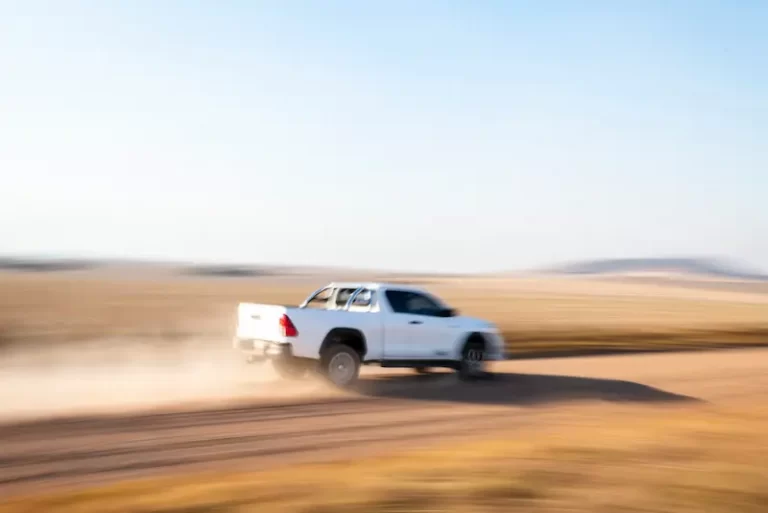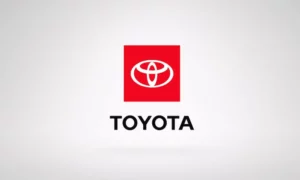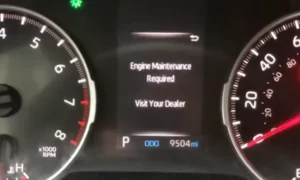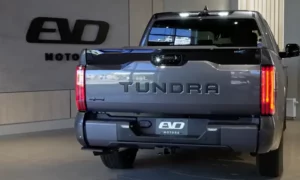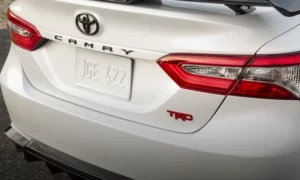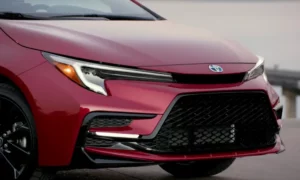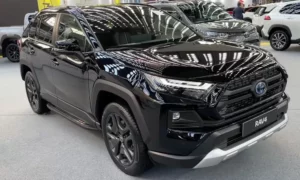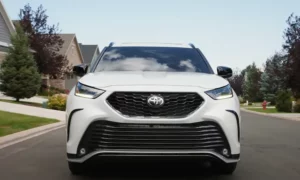LSD means Limited Slip Differential and it is a term specific to a vehicle’s traction. It is a setting designed for terrible or dangerous road conditions. When the vehicle detects incoming dangerous conditions, the engine automatically activates the braking system before the situation can become dire or dangerous.
What Is The Toyota Auto LSD?
The automatically limited slip differential is, as the name implies, automatic. There is a system constantly monitoring road conditions. If the system detects that the conditions are increasingly becoming more dangerous or more unstable, this system will automatically turn on the limited-slip differential.
When the Toyota vehicle activates the LSD system, the brakes will engage and limit the speed and movement of the tires. When the limited-slip differential is active, the driver will have to steer their vehicle with limited steering control.
It will also be more difficult for the driver to make Sharp turns. When the driver makes a turn while the auto LSD system is on, the turn must be slow and wide. This is to prevent the vehicle from spinning.
When your auto LSD system activates in your vehicle, we recommend putting on your emergency lights to show the other drivers around you that there is an issue with your vehicle and that they should stay away.
A driver is able to activate their vehicle’s auto LSD system. But, unless they can sense that something terrible is about to happen, they should allow their vehicle to turn it on for them. The driver should never have the LSD system on when they are driving around normally.
What Are The Criteria That Activates The Limited Slip Differential?
The first rule of the LSD system every Toyota driver should know is that the system is only active when the vehicle speed is 62mph or less. The system will deactivate when the vehicle reaches 65 mph.
The first sign of danger the Toyota vehicle monitors for is when one of the rear wheels spins without control. It will prevent the Wheel from spinning by increasing traction on that wheel.
The LSD system will also activate when it detects a wheel slip. A wheel slip is what happens when one of the wheels spins faster or slower than the rest of the other Wheels.
The LSD light appeared on my dashboard. What’s going on?
In all of our vehicles, the different lights that appear on the dashboard are indicators of either a status or a problem. When the driver sees the auto LSD light on their dashboard, the light indicates that the system is off.
The appearance of the light does not mean that the other LSD will not activate. It simply means that the computer in the vehicle does not detect any dangerous situations, so the LSD does not need to be on.
However, if the LSD light flashes off and on, then it means the limited-slip differential program has turned on and is now working to control the traction of the vehicle.
What If The Light Turns off?
The LSD light should always be on. If it does not appear on your dashboard, there is an issue with the part of the LSD system that controls the brakes. In this case, the brakes have overheated.
My Vehicle’s Brake Keep Overheating
Brakes that overheat for the first time aren’t much of an issue. But if your brakes continue to overheat again and again, then replace them.
To fix this issue, the driver will have to take their vehicle to a mechanic so they can replace the brake pads. If you are handy and know your way around the braking system of a vehicle, you can replace the pads yourself.
If you don’t know much about your vehicle and you want to try replacing your brake pads and go ahead. Then, take your vehicle to the closest mechanic and have them evaluate your DIY job.
Although, we do not recommend replacing the brake pads yourself if you don’t know what you’re doing. If you install the brake pads correctly, they will not work and you won’t be able to stop when you press the brakes to slow down at the first red light.
Your vehicle will either drive directly into the intersection without stopping or you will hit the vehicle in front of you and your insurance will punish you severely.
Replacing the brake pad is a pretty big job. Replacing one brake pad on one axle will cost me $100. So if you need to replace the brake pads on two of your axles, that’ll be $600 in total.
How To Turn Off the Auto LSD?
We do not advise turning off the LSD system. But there are certain times when it is best to conserve engine and battery power. Or perhaps the auto LSD system has a glitch and is making steering difficult.
If you want to turn off the auto LSD, then there are several ways to deactivate it. The message in wish to turn off the auto LSD depends on your model of vehicle for some vehicles we’ll see you like
For some Toyota models, all you need to do is press and hold the traction control button for a couple of seconds.
You will see the auto LSD light on the dashboard turn off.
For other models, turning off the traction control also turns off the LSD. Define the button that turns off the traction control, it should be a square-ish black button underneath the air conditioning button. It will have a picture of the back of a car with two white swerve lines and the word off. Press and hold this button until the light on the dashboard disappears.
Conclusion
Do not turn on The Limited Slip Differential system when you’re driving in normal conditions. It is meant for extreme or dangerous conditions. Have your brake pads serviced often so you won’t have a $600 emergency repair bill.

